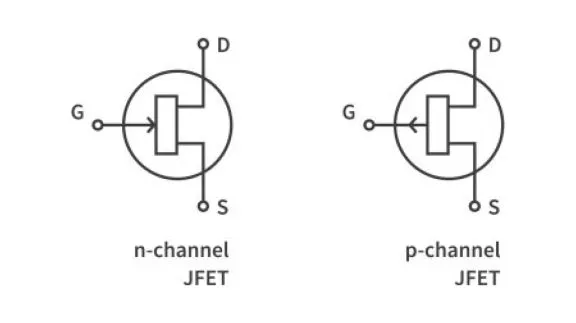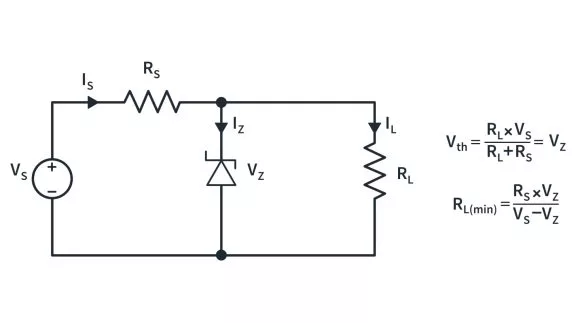An integrated circuit (IC) is a collection of tiny electronic components created and connected together on a single semiconductor wafer to achieve a common function; as an oscillator, logic gate, amplifier, timer, counter, computer memory, or microprocessor among other things.
An IC is the fundamental building block of all modern electronic devices. It consists of functional miniature circuits with millions of resistors, capacitors, diodes and transistors. All these interconnected components form an integrated system fabricated into a thin semiconductor substrate which is usually silicon crystal. It is sometimes called a chip or microchip, and is categorized as either linear (analog) or digital depending on its application.

Before integrated circuits, computers used relatively large vacuum tubes. The fundamental idea was to obtain a complete circuit, with all its components and connections, and reconstruct the whole thing in a microscopically tiny form on the surface of a piece of silicon. It was an incredibly clever idea and it has made possible all kinds of microelectronic gadgets we use today.
History
In 1949, the German physicist and engineer Werner Jacobi developed the first known integrated transistor amplifier and the idea of interconnecting electronic circuits into a single device was born. When the transistor was invented, each came in a separate plastic package, and each circuit consisted of discrete transistors, capacitors and resistors. Due to the large size of these components, early ICs were only capable of holding a few of them -- wired together -- on the circuit board.
In 1952, British radio engineer Geoffrey Dummer proposed to integrate a variety of standard electronic components in a monolithic semiconductor crystal. The patent for a prototype IC was filed a year later in 1953 by Harwick Johnson. After that, several chip designs where transistors could share a common active area were proposed but there was no electrical isolation for the components to be separated. A breakthrough came in 1958 when the fundamental problems that hindered the production of integrated circuits were solved. In 1960, the first planar monolithic integrated circuit, on which modern IC chips are based, was demonstrated. The first monolithic IC chip was invented by Robert Noyce of Fairchild Semiconductor.
Structure

On the outside, ICs look like little black chips. Inside this black chip is a complex layering of semiconductor wafers, copper, and other materials, which are interconnected to form transistors, resistors or other components in a circuit. The cut and formed combination of these wafers is called a die. The IC itself is tiny, and the wafers of semiconductor and layers of copper of which it consists of are incredibly thin (in the microscale). The connections between the layers are very intricate. An IC die is the circuit in its smallest possible form, too small to solder or connect to. To connect the IC easier, the die is packaged. The IC package encapsulates the delicate and tiny integrated circuit die and turns it into the black chip we are familiar with.
Microchip Fabrication
Although making a chip is a very intricate and complex process, there are six general steps (some are repeated more than once). What follows are simplified steps in microchip fabrication:
Wafer production: Pure silicon crystals are shaped into long cylinders and sliced into thin wafers, each of which will ultimately be cut up into many chips.
Masking: The wafers are heated to be coated in silicon dioxide. Ultraviolet light (blue) is used to add a hard, protective layer called photoresist.
Etching: A chemical removes some of the photoresist, forming a template pattern showing desired areas of n-type and p-type silicon. The wafers are marked out into many identical square or rectangular areas, each of which will make up a single silicon chip.
Doping: The etched wafers are heated with gases containing impurities to make the areas of n-type and p-type silicon. Thousands, millions, or billions of components are then created on each chip by doping different areas of the surface to turn them into n-type or p-type silicon. More masking and etching may follow.
Testing: Long metal connection leads run from a computer-controlled testing machine to the terminals on each chip. Any chips that don't work are marked and rejected.
Packaging: All the chips that worked are cut out of the wafer and packaged into protective lumps of plastic, ready for use in computers and other electronic equipment.
With millions or billions of components on one single chip, it's not possible to position and connect each component individually. Dies are too small to solder and connect to. Instead, designers use a special-purpose programming language to create small circuit elements and combine them to progressively increase the size and density of components on the chip to meet application requirements.

Each outer connection on the die is connected via a tiny piece of gold wire to a pad or pin on the package. Pins are the silver, extruding terminals on an IC, which go on to connect to other parts of a circuit. There are many different types of packages, each of which has unique dimensions, mounting-types, and/or pin-counts.
Global Shortage
With the boom of electronic device usage, the demand for computing power is higher than ever. Millions of devices today rely on computer chips. And right now, there just aren't enough of them to meet industry demand. As a result, many popular products are in short supply. The global chip shortage is an ongoing crisis in which the demand for integrated circuits is greater than the supply, affecting numerous industries and has led to major shortages and queues amongst consumers for products that require semiconductors. The crisis that has squeezed global chipmakers since late last year offered a glimpse of how the COVID-19 pandemic and geopolitical uncertainties have distorted supply chains in the highly globalized semiconductor industry.
Uncertainties caused by the pandemic led to sharp swings in orders last year. Due to global lockdowns, chip production facilities were shut down, leading to the depletion of stocks. Moreover, people had to stay at home and upgrade their electronic devices such as webcams, monitors and computers in order to work from home. In the fourth quarter of 2020, traditional computer sales saw a ~25% growth over the previous year.

The problem gets further magnified by the fact that the cost of chipmaking and keeping pace with technology advancements has increased exponentially this decade—making the business of advanced manufacturing concentrated in the hands of fewer and fewer players, a rarefied field for the deepest of pockets. At the same time, once largely mechanical machines like cars have become smarter, relying more on electronics that include semiconductors. Carmakers have had to halt production in 2021 and Playstations and Xboxes are getting harder to find in stores. Automotive electronics, which may include everything from displays to in-car systems, are set to account for almost half of a car’s manufacturing cost by 2030.
Geopolitical tensions between the United States and China made it harder for the latter to sell to companies with American ties. This forced companies to use other manufacturing plants like Taiwan Semiconductor Manufacturing Company Limited (TSMC) and Samsung. However, these companies were already producing at maximum capacity. Taiwan is the leader of the global semiconductor industry but in 2021, they experienced their worst drought in more than half a century, leading to problems among chip manufacturers that use large amounts of ultra-pure water to clean their factories and wafers.
Outlook
Extreme demand, limited production and delays in shipping caused a shortage of end-user products and higher prices. Chip makers are responding to sustained demand by increasing capacity. This, however, also takes time and money. Semiconductor factories cost billions of dollars to build, hence the push for building IC capacity around the world will certainly drive fabrication investment to a new high. Opinions on when the shortage will end vary. Some analysts see shortages being resolved by the end of 2021, but that would still require almost all of 2022 for the supply to make its way to end-users. The demand will likely begin to stabilize in the coming months, although it probably will be two years before supply catches up with demand and equilibrium is reached. The shortage could potentially drag into 2023.














